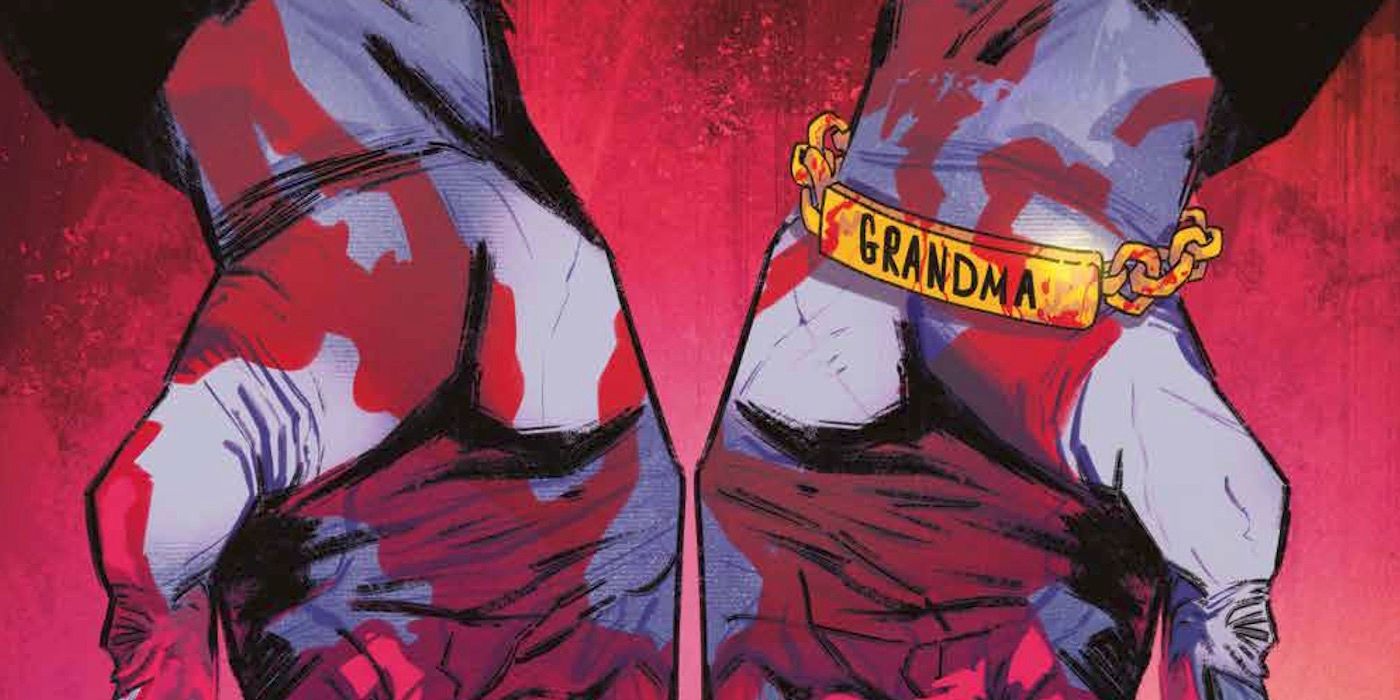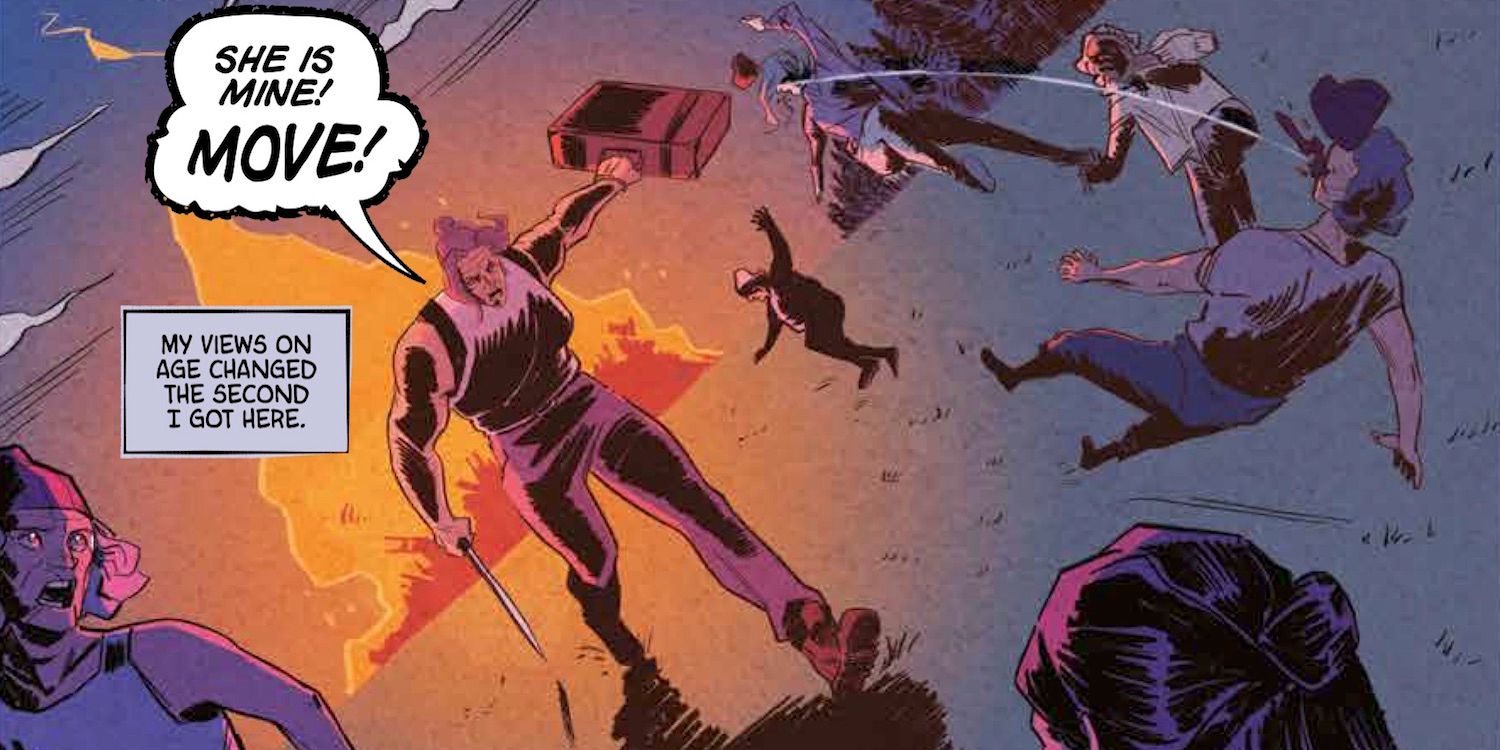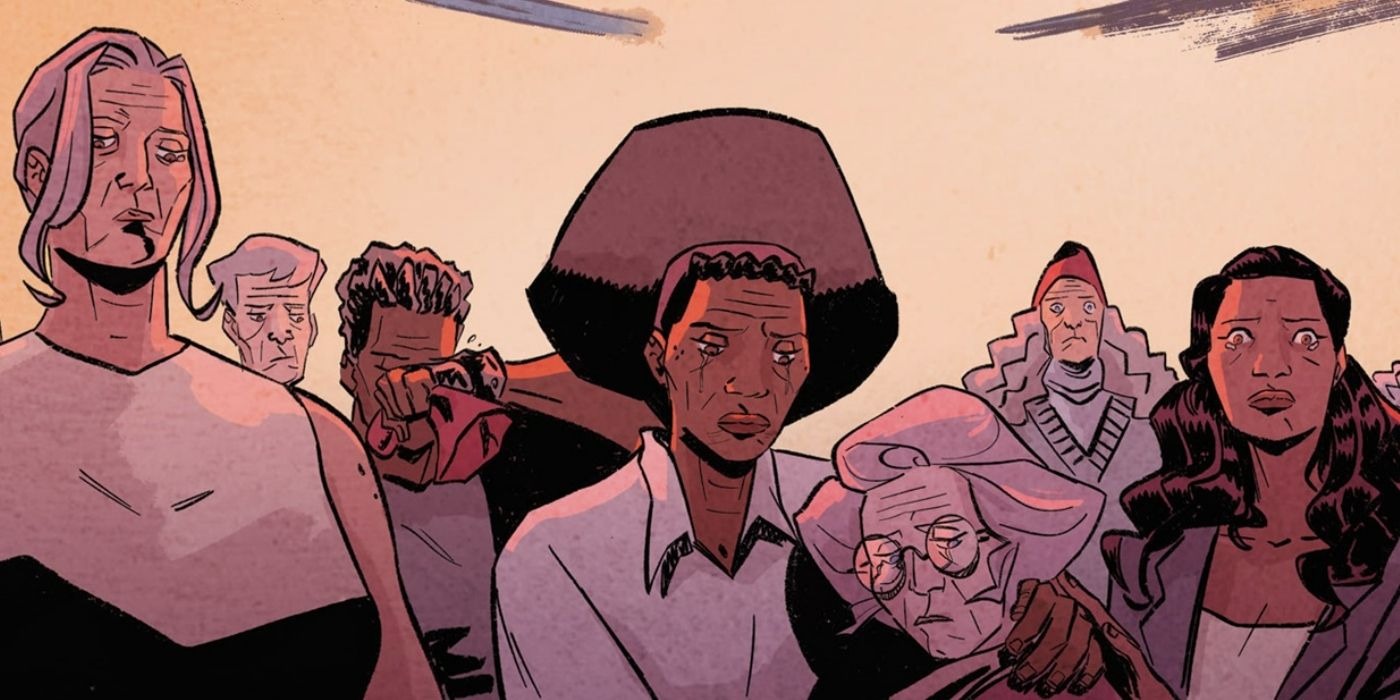Image’s 30th year has been a banner one, with the return of Saga in full swing and the Spawn crossovers becoming a pop culture phenomenon. However, 2022 has seen the Indie publisher create a massive number of original series, from Bolero (by Wyatt Kennedy and Luana Vecchio) to Little Monsters (by Jeff Lemire and Dustin Nguyen). Many of these are great for their unique storylines and complex protagonists, but perhaps none of them break the mold quite as much as Golden Rage by Chrissy Williams, Lauren Knight and Sofia Dodgson. That’s because Golden Rage features a bunch of old women walking around and talking about menopause.
Naturally, there are several complications to the simple premise. For example, the world has become a dystopia and the women have been shipped off after menopause. The story thus revolves majorly around a series of old women on an island fighting for their lives. It's a brilliant take on feminist theory as it relates to older women, but perhaps more so, it's a comic that by all means should not work. Classical wisdom, as demonstrated by the vast majority of comic book protagonists, is that the safe bet is with young white men. A consistent point of view, too, is generally preferable. A clear view of the world around the group is likewise a good idea, as is a clear enemy and goal. Golden Rage not only fails to subscribe to these prescribed concepts of what makes a comic book "good," but it actively rails against them, making the comic work precisely because it should not.
Golden Rage Features Multiple Protagonists Discussing Taboo Topics
Golden Rage is not for the faint of heart, as the central topic is about that most dastardly of all bodily functions: periods. The central premise of Golden Rage is that women are shipped off when they are no longer "useful to society," a phrase that means they have entered menopause. Though Golden Rage's first panels focus on the blood of violence, the blood of menstruation features far more heavily in the plot. Ultimately, in spite of the early warlike nature of the narrative and the villain it sets up, Golden Rage doesn't feature tales of vengeance and violence, but tales of emotion and bonding. There isn't focus on the peaceful old women wanting vengeance against the murderous "red hats," but discussion of the island and how to protect each other. Frankly, Golden Rage just features very little to imply a major villain beyond the outside world, which the narrative is more than content to simply hint at.
Golden Rage is additionally content to keep its protagonists' primary interests in the forefront. Though a great many comics focus on the love life of their protagonists, Golden Rage only really discusses it in the occasional panel, with the vast majority of love more sororal than romantic. It avoids romance, violence, and largely world building. There is no singular purpose beyond survival, and Golden Rage is more than happy to inhabit this space. It skips around to different perspectives and maintains little in terms of a narrative throughline, with character building not only central, but very nearly the entire point.
Image's Golden Rage is Compelling Despite its Topic
Golden Rage is incredibly compelling, with its minimal, character-focused Narrative a brilliant antithesis to everything that comes to mind with comic books. The first volume of Golden Rage featured a series of highly emotional moments and character-building based around the small world of a self-contained island with women playing the role of Lord of the Flies. It, much like Lord of the Flies, is both a parody of and a criticism of society and literature, at once showing that exceptinalism is misplaced and that humans are at their most humane. Golden Rage isn't an adventure or a slice-of-life, but a series of character studies sewn together by the premise of sisterhood and what it takes to unite when the world is stacked against one's own betterment.
Golden Rage should not be successful by the rules of contemporary comics, but because of non-traditional comics and comix like Gender Queer, the door is beginning to open to allow for truly unique and different narratives. Golden Rage takes this opportunity to fly in the face of tradition, and it does so with aplomb. It serves as both an answer and a template to show how comics can handle similar stories that supposedly just "don't work."



